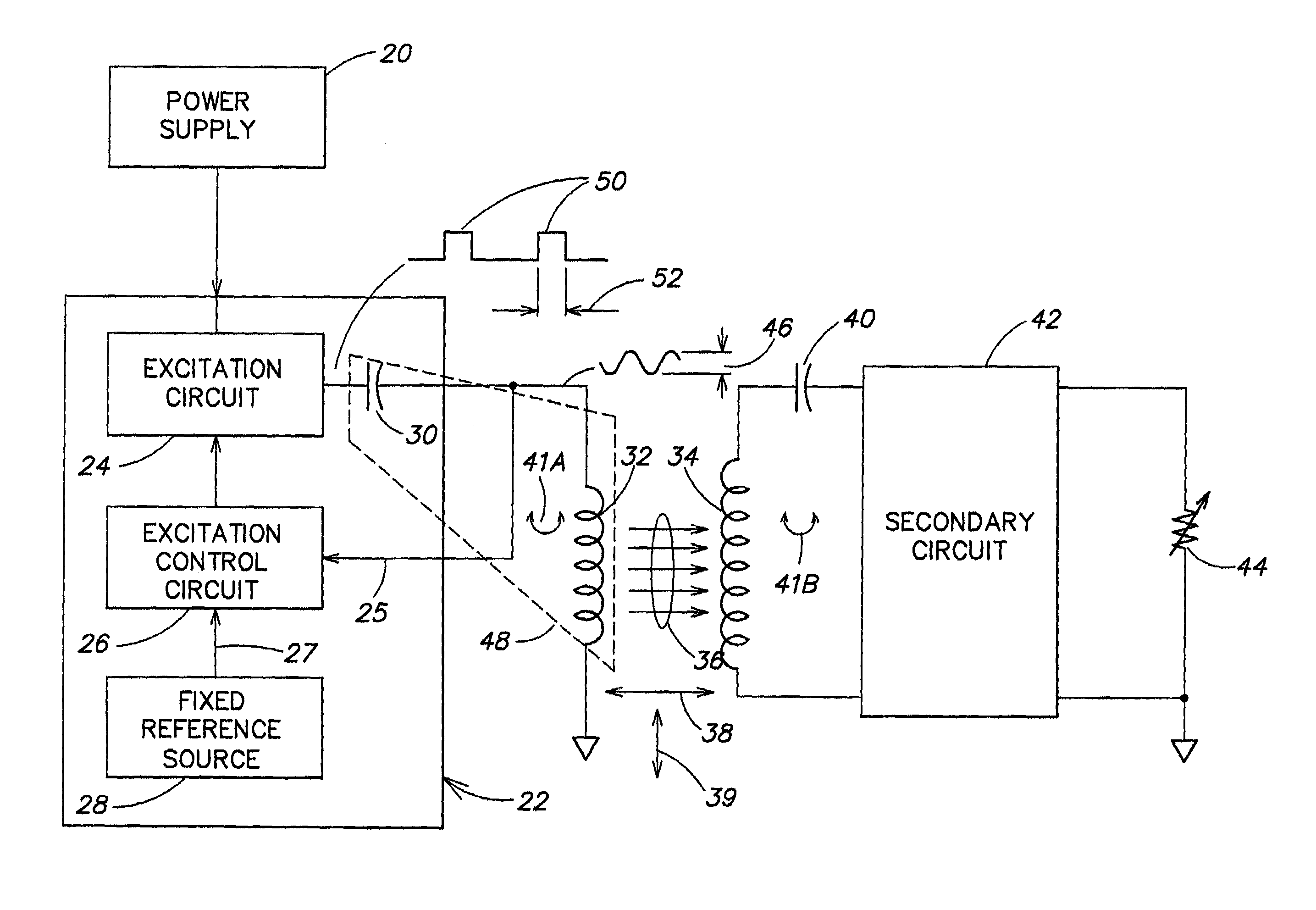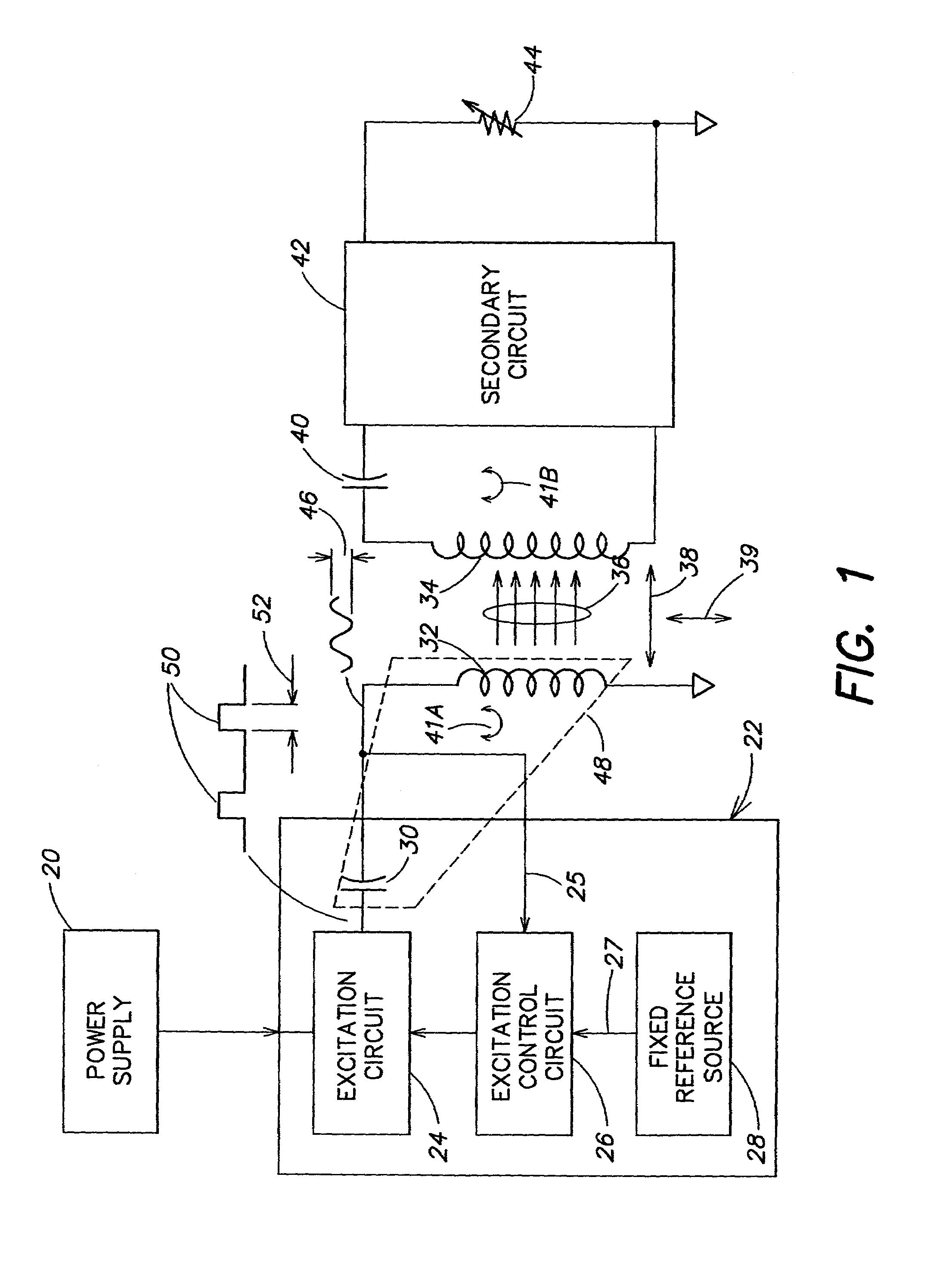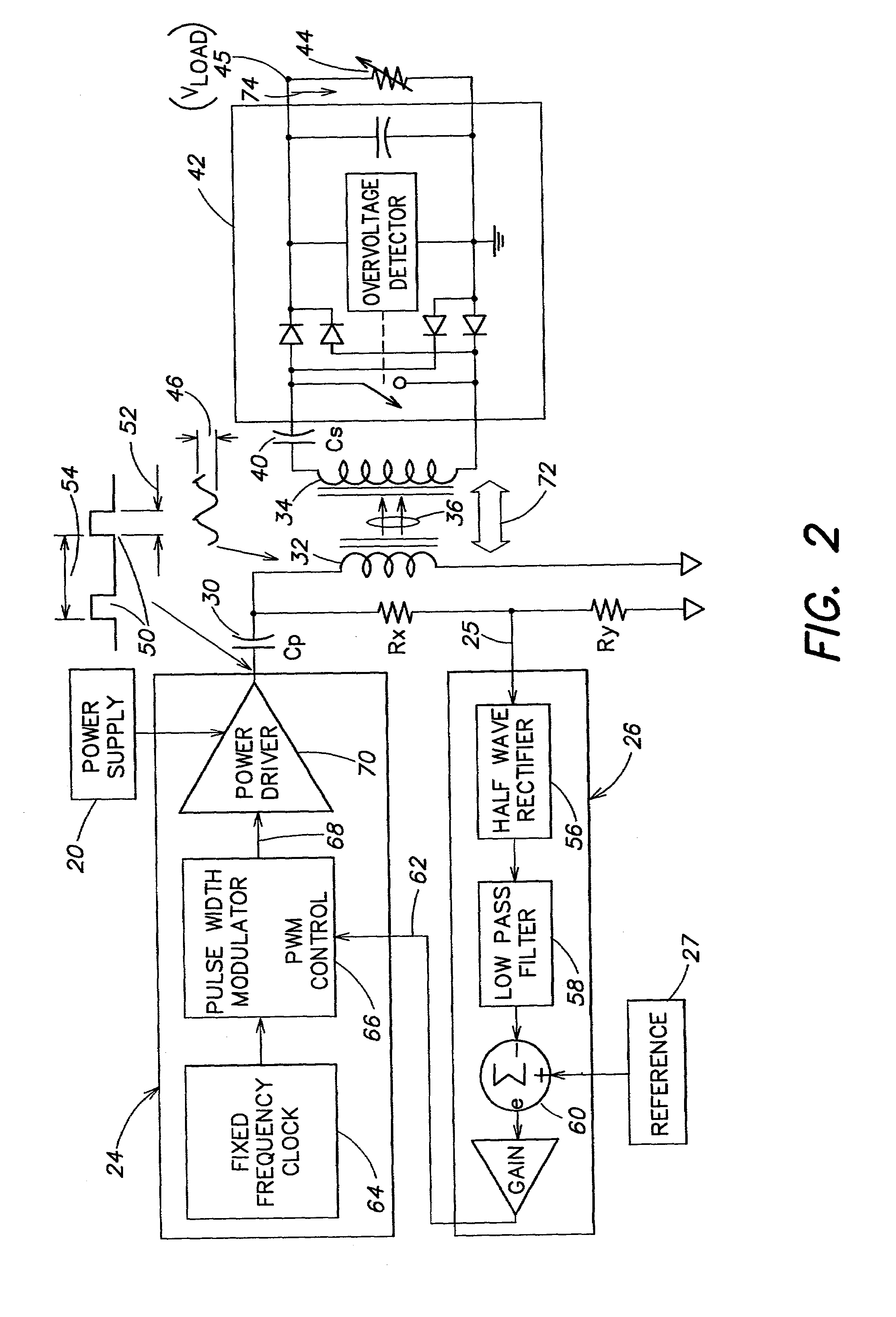Methods and apparatus for providing a sufficiently stable power to a load in an energy transfer system
a technology of energy transfer system and load, applied in the field of energy transfer methods and equipment, can solve the problems of difficult and/or undesirable to include a substantial and/or long-term source of power, difficulty in implementing a substantial and/or long-term “internal” power source for internally located devices, repeated entry, etc., and achieves the effect of reducing the number of devices in the system
- Summary
- Abstract
- Description
- Claims
- Application Information
AI Technical Summary
Problems solved by technology
Method used
Image
Examples
Embodiment Construction
[0032]One embodiment of the present invention is directed to methods and apparatus for providing a sufficiently stable power to a load in an energy transfer system. In one aspect of this embodiment, the energy transfer system may transfer energy across a physical boundary. The boundary may be formed, for example, by some inanimate material or living tissue and may be in a solid, liquid or gaseous phase. The boundary may also be formed by a combination of inanimate materials or living tissue in various phases. In another aspect, the boundary may be arranged to form a closed system (e.g., the boundary may completely surround a “body”), and the energy transfer system may be implemented so as to transfer energy, from a position external to the body, across the boundary to a position internal to the body. The transferred energy may be used to provide power to one or more devices located internal to the body. One example of an application of such an energy transfer system is providing pow...
PUM
 Login to View More
Login to View More Abstract
Description
Claims
Application Information
 Login to View More
Login to View More - R&D
- Intellectual Property
- Life Sciences
- Materials
- Tech Scout
- Unparalleled Data Quality
- Higher Quality Content
- 60% Fewer Hallucinations
Browse by: Latest US Patents, China's latest patents, Technical Efficacy Thesaurus, Application Domain, Technology Topic, Popular Technical Reports.
© 2025 PatSnap. All rights reserved.Legal|Privacy policy|Modern Slavery Act Transparency Statement|Sitemap|About US| Contact US: help@patsnap.com



